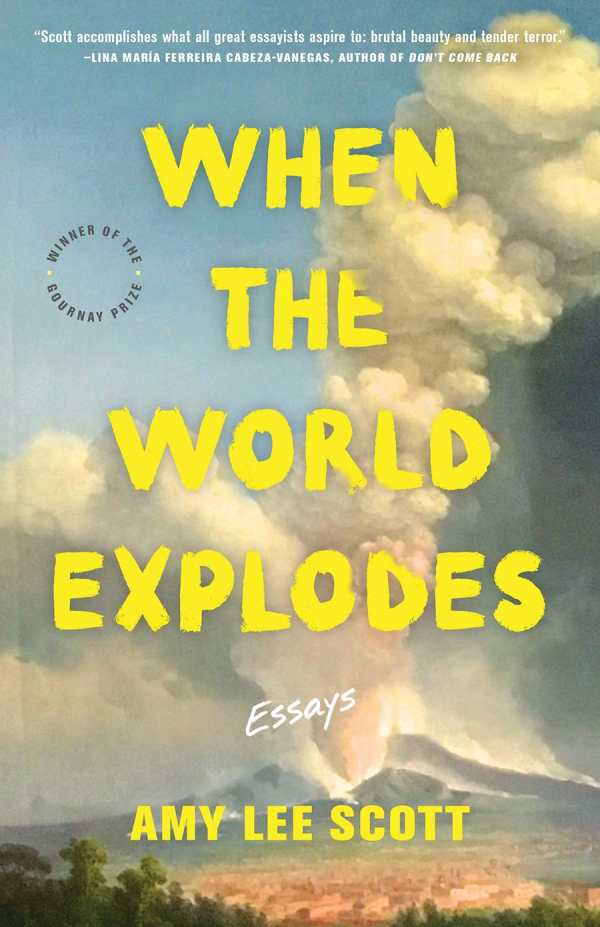When the World Explodes
Essays
The incisive autobiographical essays of Amy Lee Scott’s When the World Explodes ponder private tragedies and global threats.
Eleven inquisitive pieces consider personal crises alongside natural disasters and gun violence. One links 2020’s hurricane season to a spate of racially motivated killings, while another compares the active shooter drills at Scott’s son’s school with the earthquake drills she grew up with in California. “When the World Explodes” likens a friend’s sudden demise to the 1883 Krakatoa explosion. “Of Floods and Ruination” operates on two levels: the individual (Scott’s miscarriage) and the environmental (the flooding of Scott’s Michigan city).
Scott was adopted as a baby from Korea, and motherhood and adoption are potent themes across the book. “BabyLand” marvels at the strangeness of the Cabbage Patch Kids phenomenon during a visit to its Georgia headquarters. The dolls’ popularity peaked in the early 1980s—just as Scott’s mother was investigating international adoption. “Conflagrations, and the Quelling Of” traces Scott’s mother’s 1992 death from breast cancer in parallel with the riots in nearby Los Angeles. “Field Guide to a Common Pregnancy” collapses generations, addressing Scott’s child and musing on her inheritance from her birth mother.
The ambitious “Convergence” weaves delicate connecting threads: from a suicide witnessed in London through Virginia Woolf to the aftermath of Scott’s mother’s passing; from painting techniques to Leonardo da Vinci’s flying machine. The piece functions via imagined moments, jump cuts, and bird metaphors. “Theories of Cosmogony” employs a similar series of leaps between various natural disasters observed or in the historical record.
Scott explains her strategy thus: “splice the enormity … into the localness.” Her experiences of loss, calamity, and anxiety reduce universal dangers to a manageable magnitude. In this way, the memoir When the World Explodes is a graceful response to the “howling unknowns battering against us.”
Reviewed by
Rebecca Foster
Disclosure: This article is not an endorsement, but a review. The publisher of this book provided free copies of the book to have their book reviewed by a professional reviewer. No fee was paid by the publisher for this review. Foreword Reviews only recommends books that we love. Foreword Magazine, Inc. is disclosing this in accordance with the Federal Trade Commission’s 16 CFR, Part 255.

